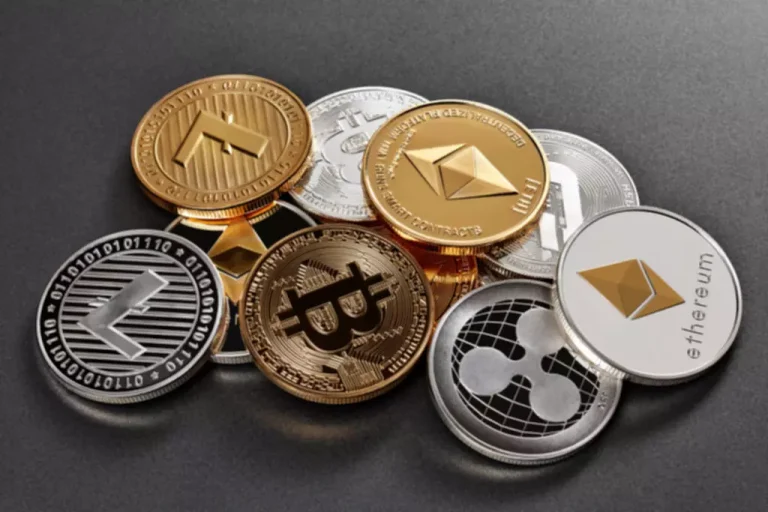Content
But while ESG proponents work Blockchain towards a new, more rigorous equilibrium, values-driven investors are seeking more direct and transparent ways to diversify their portfolios while prioritising impact. This leads to better social outcomes and more democratic and efficient decision-making. Even though ReFi’s actions and results are not tangible in the short term, most of these investments have a long-term perspective. The example of the Toucan Protocol provides a better understanding of how carbon rights are tokenized and solves the price discovery problem. As a core axiom, prosperity should be measured not just by financial growth, but by the longevity of our ecosystems and the strength of our communities.
What is Regenerative Finance (ReFi) and How to Navigate This New Financial Frontier?
Rock’n’Block has helped many businesses bring their blockchain and ReFi visions to life, delivering high-quality solutions that drive real-world impact. Our rigorous security audits protect your project from threats, providing peace of mind. Integrating ReFi principles can attract environmentally and socially conscious investors to DeFi platforms, expanding their user base and fostering a positive reputation. The collaboration between DeFi and ReFi can lead to innovative financial products that are both profitable and beneficial to society and the environment. DeFi development relies heavily on blockchain technology to ensure decentralization, transparency, and security. This https://www.xcritical.com/ technologies enable automated and trustless transactions, enhancing efficiency and reducing the need for intermediaries.
Three Premises of Regenerative Finance

They innovate and develop solutions that address pressing environmental and social challenges while generating financial value. ReFi Hub has already helped avert 293 tonnes of CO2, funded 4 global regenerative projects, is backed by a 650K community fund, and built a community of 10,000+ investors, proving that restoring the planet is profitable. As a cross-chain platform built on Moonbeam, ReFi Hub benefits from high throughput, Ethereum compatibility, and seamless cross-chain integration – critical capabilities at the intersection of DeFi and real-world sustainability projects. At the intersection of sustainability, Moonbeam, and DeFi lies ReFi Hub, an innovative platform aiming to direct over $1 billion into environmental sustainability efforts by 2030 using blockchain regenerative finance blockchain technology. As a pioneering ReFi project, ReFi Hub is proving that blockchain technology can be a powerful catalyst for restoring the planet. The ReFi Hub team previously built CoralTribe, a project harnessing the power of NFT art to impact the environment and natural world while incentivizing holders with shared revenue.
Regenerative finance in action: Food systems, racial justice and mission-first business structures
ReFi aims to correct many of the excesses of globalization we have seen over the past 40 years. ReFi projects and proponents want to return the focus back to more local communities, build resilient supply chains, and create economic systems that do not prioritize shareholder growth over these ReFi goals. Economic systems based solely on increasing shareholder value can often have negative effects on the people, communities, and the environment. In our interconnected world, businesses and organizations who don’t take a holistic view of the larger system they comprise can be more fragile due to compounding, and unforeseen shocks. ReFi aims to use web3 technology and decentralized coordination to help solve these issues and build new incentive structures. The ReFi ecosystem comprises complex on- and off-chain activities, and the achievement of on-chain interoperability that reflects the governance and rule-setting among the off-chain communities presents several challenges (Schletz, 2022).
It does this by using financial tools and strategies that support sustainability and promote the well-being of people and the planet. In this article, I will dig deep into the concept of regenerative finance and its potential to support a just transition to a sustainable economy. The Introduction to Regenerative Economics course focuses on addressing the challenges and opportunities in re-imagining our entire economy. While the Finance for a Regenerative Economy program narrows in on the critical role, and key obstacle, finance plays in enabling economic system change. If you haven’t already taken the Introduction to Regenerative Economics Course, you can still take the Finance Program. You will gain access to foundational sessions on Regenerative Economic theory in the Finance Program course content.
This creates a win-win scenario in which species are preserved, companies can offset their emissions and communities will be paid for their efforts to preserve vulnerable species. Public goods are available to everyone — things like parks, clean air, or free education. There are real-world public goods, like the ones we mentioned, but also digital public goods — specifically free and open source software, open datasets and open source standards.
The number of measurements taken per stratum is correlated to the prevalence of each stratum in the entire project area. A total of 49 ML models are then used to continuously improve the estimation until the margin of error of forecast in the test data is below 5% (Merrill et al., 2022). Trust in the methodology is built by making data openly accessible and conducting a scientific peer review process before applying the methodology. Smart contracts are self-executing programs with the specific terms written into a code. For instance, they ensure that funds are only released when specific sustainability criteria are met. This cuts out the middlemen, lowers the cost of transactions, and makes it easier to get sustainable projects off the ground.

His new business venture SuperModular, aims to build a modular stack of products used specifically for public goods and funding tools. Prior to his career in web3, Kevin spent 15 years in the world of web2, working as a CTO and founder of open-source software and web startups. The ReFi space is rapidly evolving, but it’s still in its infancy and only now taking shape. At this stage, it’s hard to define exactly what projects and initiatives are “truly ReFi” and which ones aren’t. Many people and organizations are trying to tackle the task of mapping out the borders of the ReFi movement. Applications on a blockchain could be poorly designed or malicious — after all, access is open so anyone can create a decentralized application.
Those businesses then utilize the funds for their operations, regularly repaying interest and principal to a smart contract that iRWA holders can claim rewards. EcoMatcher has evolved from a pure tree-planting organization into a disruptive digital company that uses AI-powered chatbots to let customers chat with trees and blockchain to track and tokenize each tree planted. Similarly, Plastic Bank has developed a blockchain platform to better track all the plastic its communities remove from the ocean and what happens with the plastic afterward, providing ocean-to-product traceability. Rather than buying carbon offsets, AstraZeneca has embraced carbon onsetting by committing to planting 200 million trees across six continents by 2030 to support the World Economic Forum’s Trillion Tree Campaign. Incorporation of smart contracts in blockchain platforms ensures that transactions are not only automated (enhancing efficiency) but characterized by an unprecedented level of reliability and reduced counterparty risk.
- They also create verifiable social incentives for communities to benefit the society around them through digital ownership certificates built with non-fungible token (NFT) technology.
- The ReFi movement seeks to achieve this by utilizing digital monitoring, reporting, and verification (D-MRV); tokenization of assets; and decentralized governance approaches.
- Reconfiguring the current economic system from being extractive to regenerative is the focus.
- The principles for a regenerative economy include balance seeking, in right relationship, holistic wealth views, adaptability, strong participation, emphasis on community, solid circulation, and edge effect abundance (meaning population abundance varies in a given ecosystem).
Conventional finance approaches are too myopic to fully address the systemicfailures we’re facing. The growing adoption of environmental, social andgovernance (ESG) factors in investing is a positive trend; but it’s mostly aboutreducing negative impacts. Even investment strategies aimed at achievingpositive net impact tend to focus on a narrow set of targets, and they oftenneglect to consider how outcomes are created and who benefits. The idea of regenerative finance has evolved over the past few decades, influenced by the growing awareness of environmental and social issues.
In finance, this idea translates to creating economic systems that sustain and actively improve the resources they depend on. This can include investments in renewable energy, sustainable agriculture, and community-driven projects that promote social equity and environmental stewardship. Regenerative finance (ReFi) is an innovative approach to finance that integrates sustainability and ecological restoration into financial systems. ReFi aims to create economic practices that sustain and actively regenerate natural and social capital. This means that ReFi projects focus on building financial returns while improving the environment and supporting social well-being.
The decentralized structure of web3 guarantees that the ownership and influence of these tokens are public and verifiable. The construction and trading of decentralized green bonds is made easier by web3 technology. These bonds originate in blockchain systems and give a clear and effective way to finance environmental projects.
Leveraging outstaffing for Web3 development can empower organizations to build cutting-edge ReFi solutions by accessing skilled developers specialized in blockchain and sustainability-focused projects. Biocredits, on the other hand, are an emerging financial market that also turns ecosystem restoration and biodiversity enhancement into profitable ventures. In this system, businesses or governments can earn credits by engaging in projects that restore natural habitats or improve ecological health.

